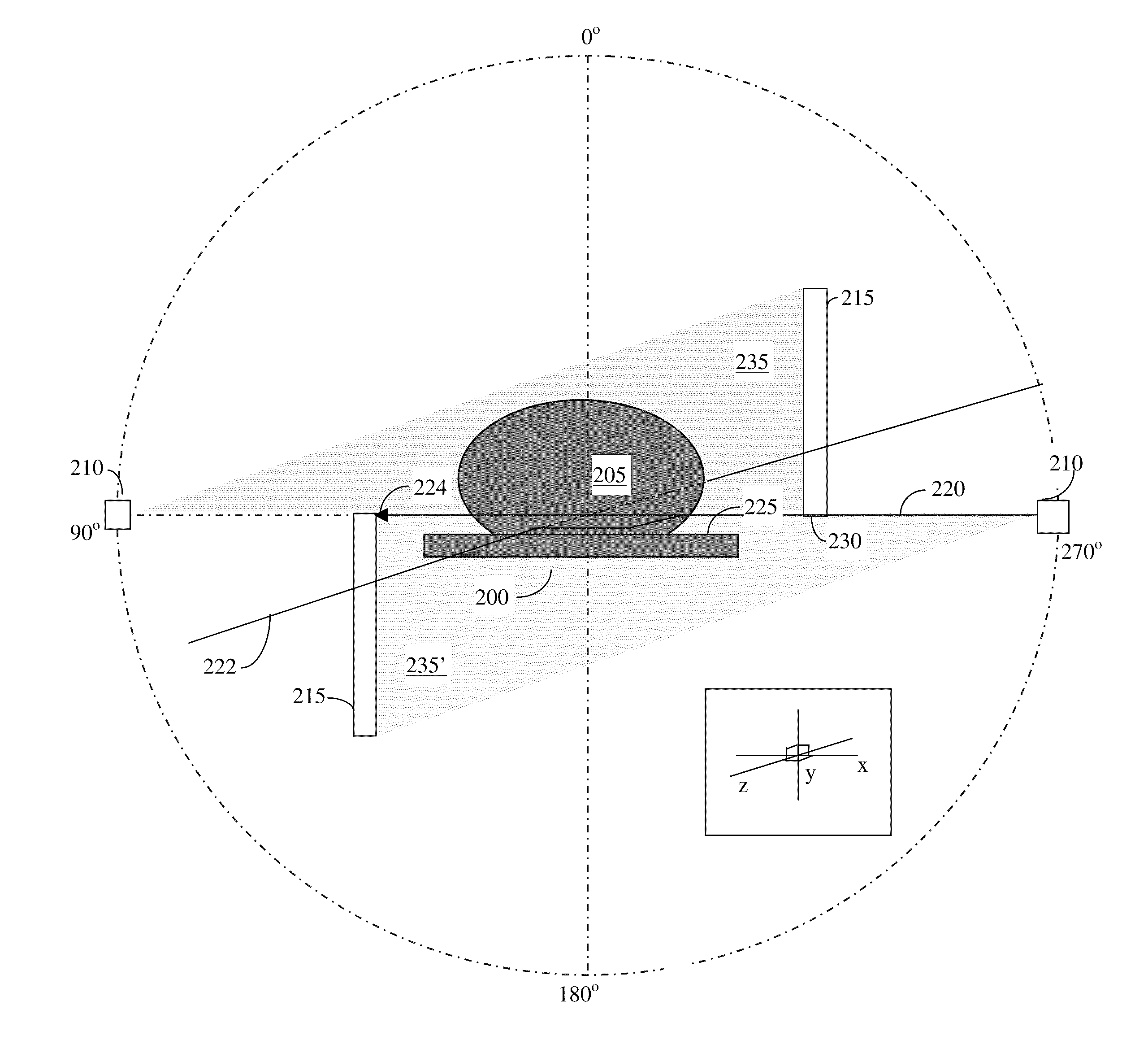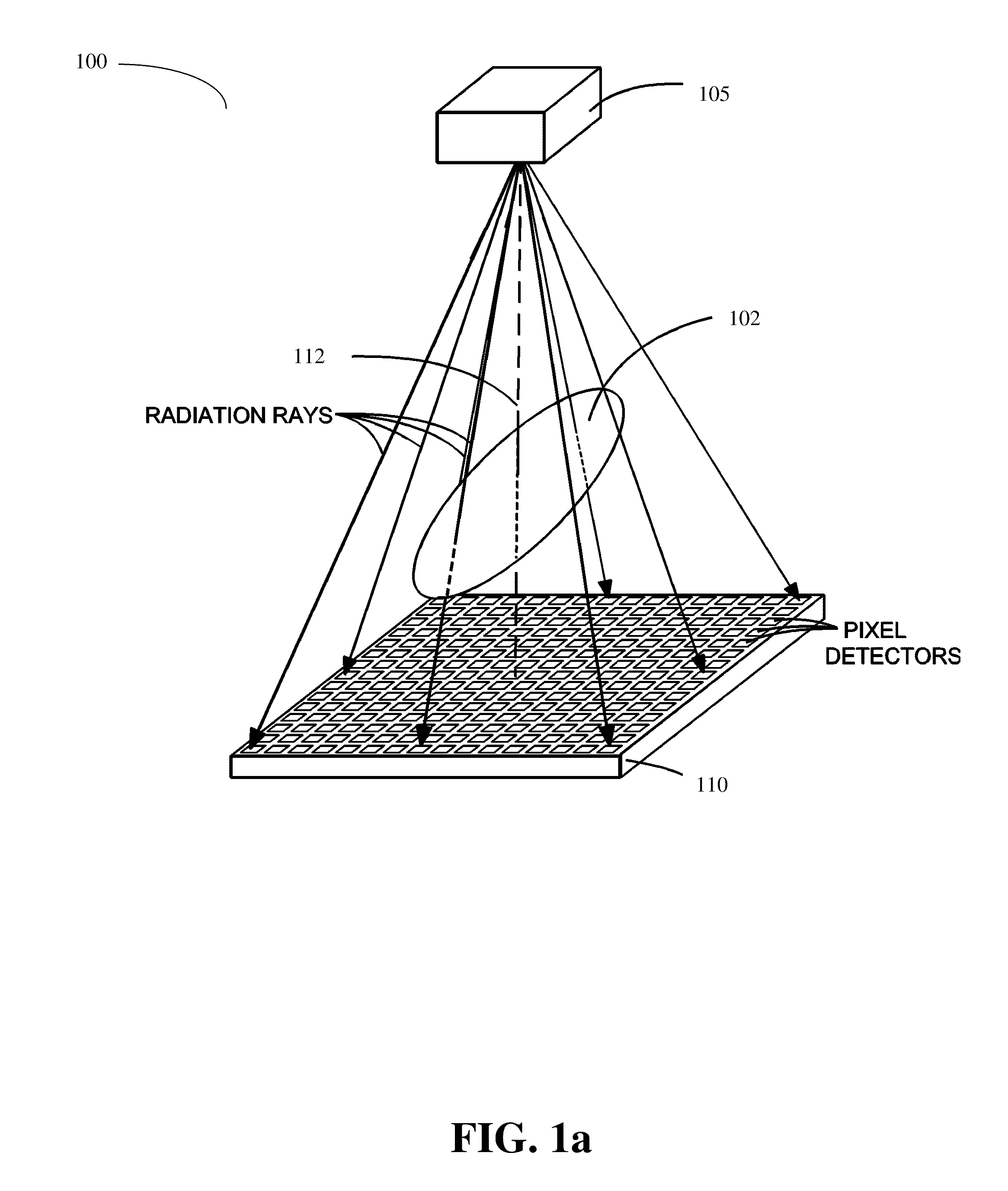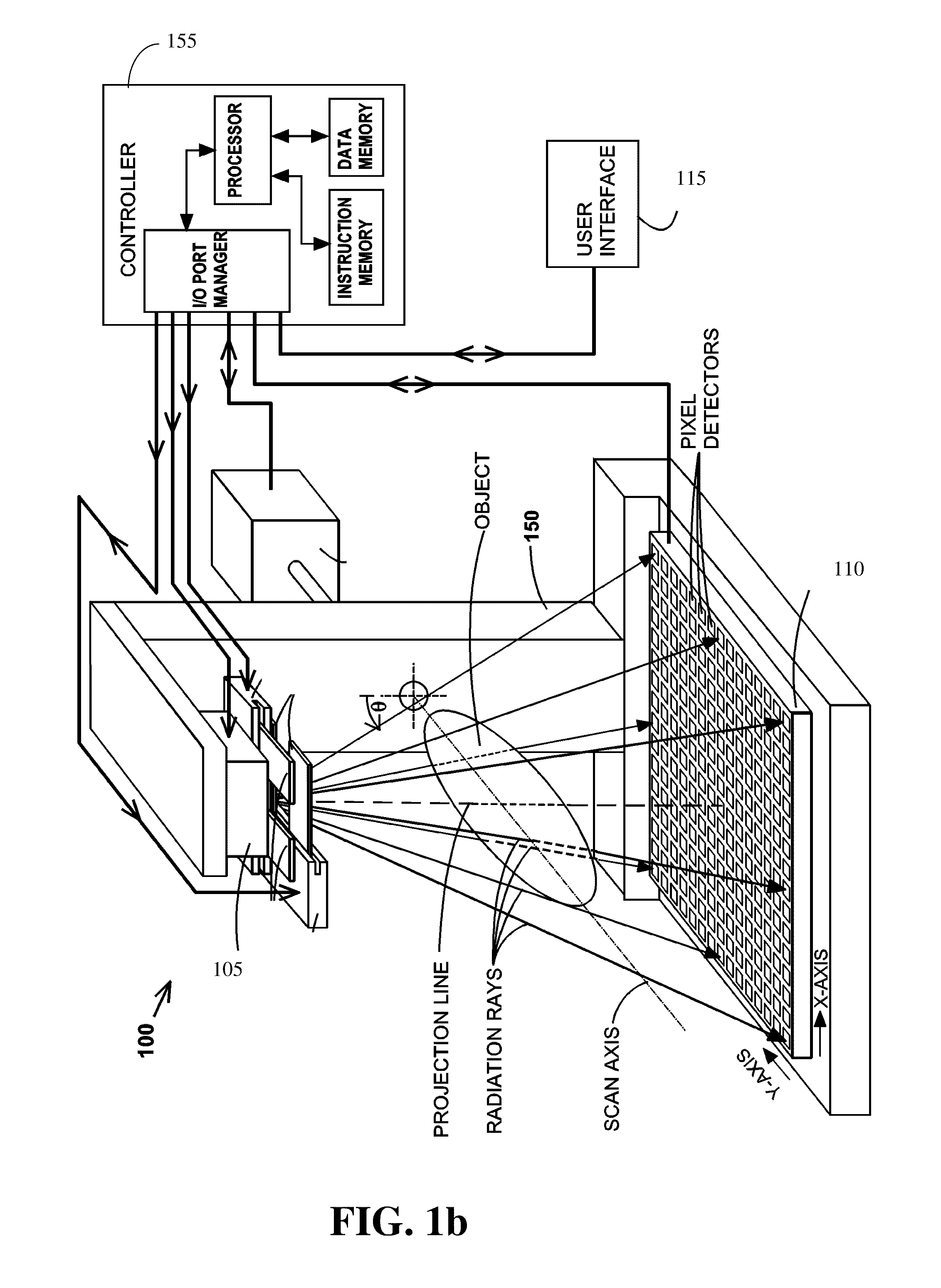Methods of Scatter Correction of X-Ray projection data 1
a scatter correction and x-ray technology, applied in the field of scatter correction of x-ray projection data, can solve the problems of loss of spatial and contrast resolution in radiographic projection data and ct images, slight non-uniform radiation distribution, and measurement errors
- Summary
- Abstract
- Description
- Claims
- Application Information
AI Technical Summary
Benefits of technology
Problems solved by technology
Method used
Image
Examples
Embodiment Construction
[0032]The inventive methods will be described according to embodiments addressing scattering from a scattering object adjacent to the target object or object of interest. An example thereof is a patient table which acts as a supporting structure for the object of interest. These embodiments are exemplary and not limiting. The methods and systems described herein can be applied to scattering from other objects adjacent to the object of interest.
[0033]The methods and associated systems and computer program products may be used alone or in various combinations with one another. As used herein and in the claims, the action of obtaining an item, such as an estimate of a quantity, encompasses the action of receiving the item from an outside process, computer-program product, and / or system, and the action of generating the item by the claimed process, computer-program product, or system.
[0034]The radiographic projections described herein are generated by a two-dimensional imaging device ir...
PUM
 Login to View More
Login to View More Abstract
Description
Claims
Application Information
 Login to View More
Login to View More - R&D
- Intellectual Property
- Life Sciences
- Materials
- Tech Scout
- Unparalleled Data Quality
- Higher Quality Content
- 60% Fewer Hallucinations
Browse by: Latest US Patents, China's latest patents, Technical Efficacy Thesaurus, Application Domain, Technology Topic, Popular Technical Reports.
© 2025 PatSnap. All rights reserved.Legal|Privacy policy|Modern Slavery Act Transparency Statement|Sitemap|About US| Contact US: help@patsnap.com



